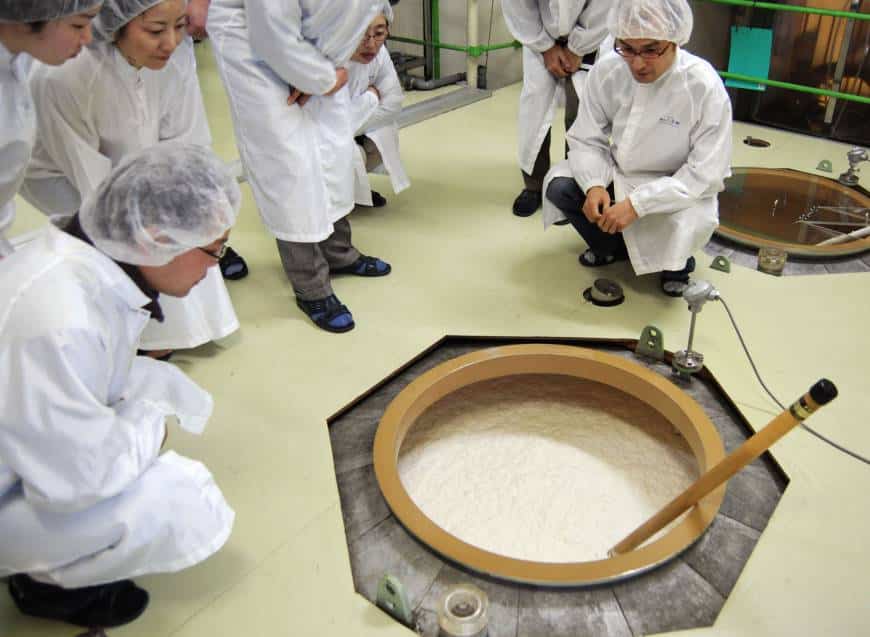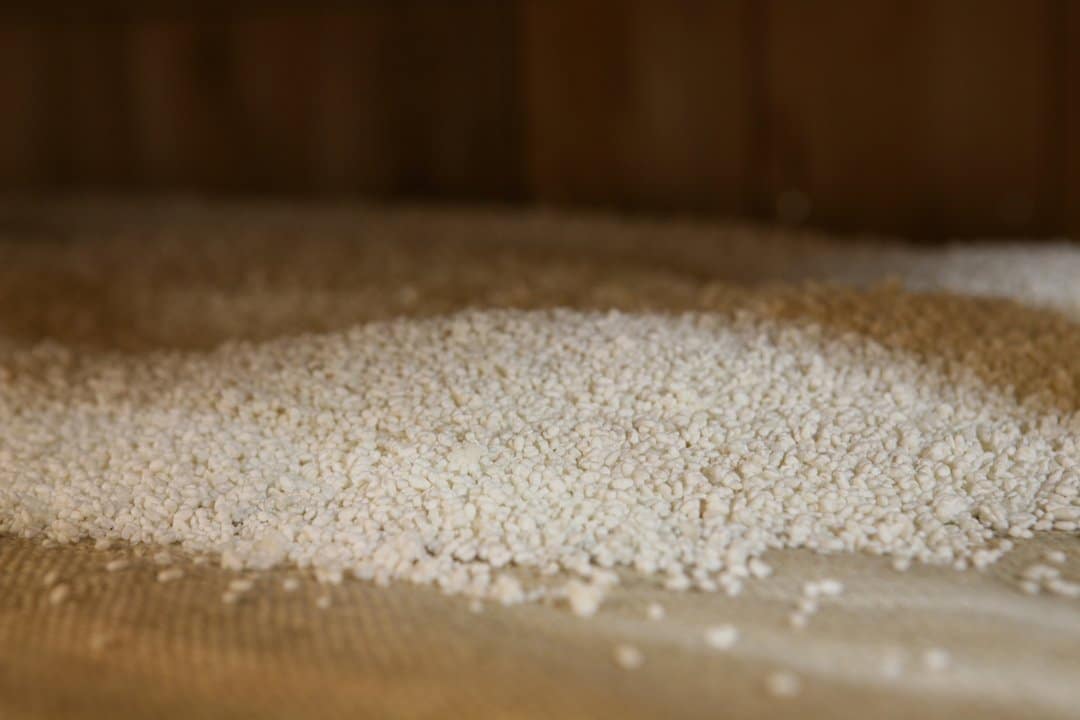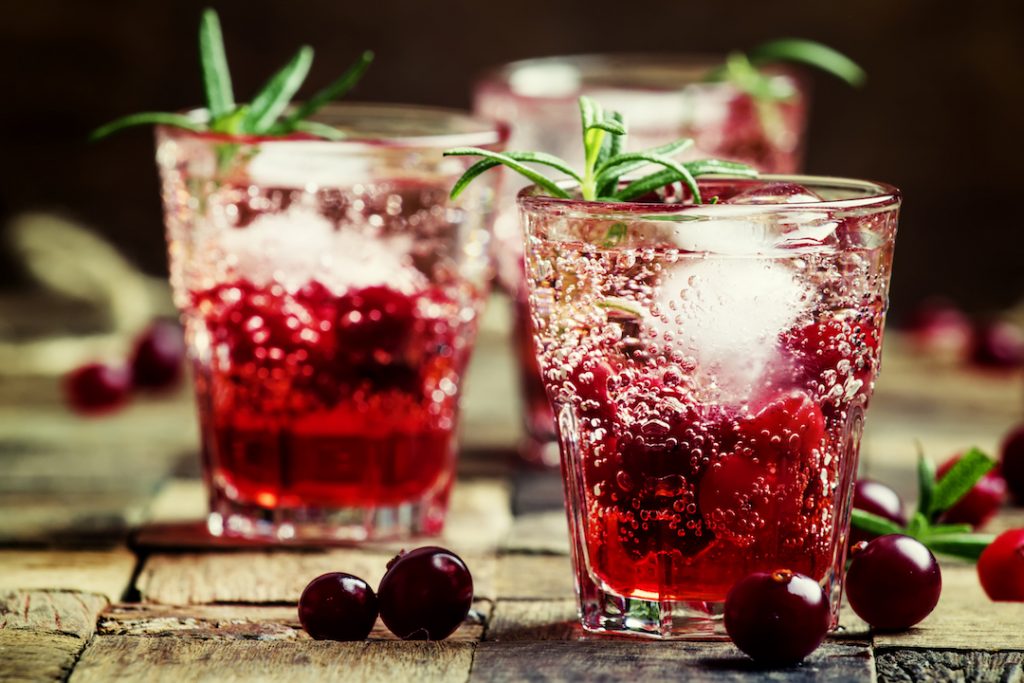In our previous romp with Sake, we explored what sake is. Now let’s move on to the how. While sake’s ingredients are simple and pure the process tends to be a bit more, shall we say, involved. If you are drinking sake, you are drinking something that has been made with extreme care and precision. Each batch of sake is carefully prepared, capturing the Japanese essence of perfection and cleanliness. The quality of the water, rice, koji enzymes and yeast strains are all a meticulous part of the equation. The first step? Preparing the rice…
Careful Sake Rice Prep
We hate to sound like a broken record, but the word ‘careful’ is not used lightly here. The producers must start with selecting the rice and then processing it by milling or polishing. This means taking away the layers of fat, oils, and proteins from the out layer. Be careful though! Milling must be done gently as to not create too much heat (which has adverse affects on water absorption later) or to crack the rice kernels which is not good for fermentation!
Once polished down to the pre-determined percentage that rice is then washed, in many cases by hand. Most producers of premium sake are in close proximity to it, watching each step of the process as it occurs and rarely leaving those little pieces of rice alone. Next, the rice is steamed, cooking it to a degree that gives the rice a hardened outside but a soft center. Afterwards, the rice is hand separated and spread onto a surface to be sprinkled with Koji enzyme spores (head back to our first sake article for a refresher on Koji and the other ingredients).
Turning Starch to Sugar, the Sake Way
The Koji is the kicker: kicks off the fermentation process and most importantly does something radical. Koji spores allow the conversation of rice starch into sugars. No cooking needed as is the case with traditional beer grains. Those sugars, as we know, are important when we want to make alcohol! To allow the koji to do its thang, the rice and koji will sit, wrapped in a cloth for up to 48 hours. Once they’re done snuggling the rice and koji are moved into a tank for fermentation
Open Air Fermentation…
Now that we’re ready to ferment we have the rice, original koji, more newly added koji, spring water and yeast in the tank. Why more koji? Well, it depends on the desired sweetness of the sake. A common ratio is 75% rice and 25% koji, but it of course depends on the type of sake being made. It’s important to note that the fermentation tanks used are open-top fermenting tanks. This is essential. Sake producers need to keep the careful (there’s that word – again!) watch of the rice and make sure the temperature in the tank is always consistent.
What temperature you ask? Well, pretty darn cold, actually. As previously noted, sake brewers keep the temperature between 32 and 48 degrees Fahrenheit. 30+ degrees colder than most other alcohols! Cold and slow, as they might say. And we mean slow! Sake fermentation typically takes between 18 and 32 days. Why is the temperature and time so critical? It’s important in ensuring the desired aromas and flavors in the end product.
…But Not For The Typical Reason

But wait a minute. I thought in our last article we waxed poetic about the importance of selecting the perfect strain of yeast as a critical component as well? If it’s open air fermenting, doesn’t that mean native yeasts are sneaking in too…meaning less control? In most situations, yes. But sake breweries have tight controls over the cleanliness of their breweries for this very reason. Employees and guests alike are required to wear hair nets and not only wash their hands often but then spray them with alcohol. Quite a few breweries even go so far as to prohibit anyone from eating a common fermented soybean dish since there’s fear that the bacteria used to ferment the soybeans will affect the sake. So yes, this is technically open air fermentation but they are doing everything they can to control and eliminate the possibility of native yeast in the environment.
Sake Time
After our slow and cold tank time, our mixture is poured into cloth bags. Then these bags are carefully laid on top of one another in a Japanese mechanical press. This large steel press will hold the bags as they are gently pressed down with large plates to squeeze out the alcohol. This alcohol is then siphoned through a spout on the press. Sake is here! Well, not quite just yet. Put your glass down. The sake must now age for at least 4 months and in many cases much longer (like 12 months). Patience is a virtue here, but let’s be honest, it’s worth the wait.
What’s Next?
Now that we know the what and the how of sake it is indeed time to get drinking. In our next article we will take you into the different categories of sake so you can make your way around a menu like a pro, figure out what styles you like and be the envy of all of your friends!



